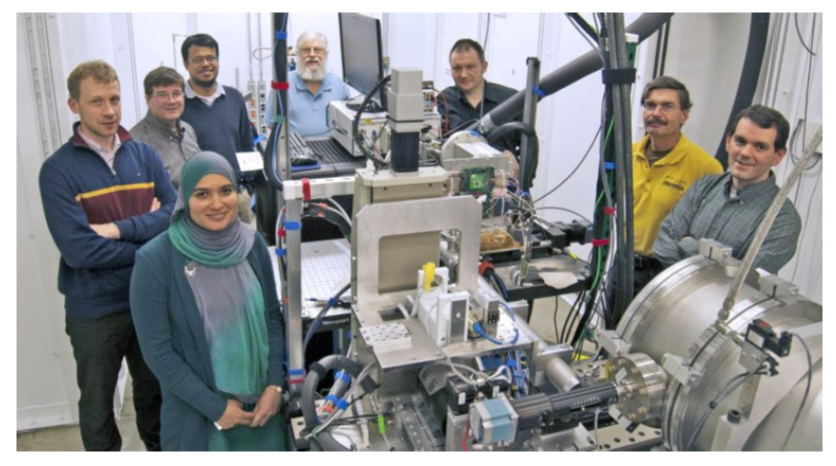|
Hybrid pixels are constructed by bonding a pixelated sensor (usually an array of semiconductor diodes) to an application specific integrated circuit (ASIC). The ASIC provides basic charge-handling and readout electronics to every pixel of the sensor. The power of hybrid pixels is that the ASIC logic can be tailored to create detectors optimized for a particular application. The technology is particularly suited to synchrotron light sources, where the number of experimental techniques is enormous and the demand for specialized detectors is high. The core APS members include: Rebecca Bradford, Jon Baldwin, Timothy Madden, Taylor Shin and John Weizeorick. |
| VIPIC (Vertically Integrated Photon Imaging Chip) |
|
The APS is a member of the VIPIC collaboration. VIPIC (Vertically Integrated Photon Imaging Chip) is an effort to develop a detector specifically optimized for x-ray photon correlation spectroscopy (XPCS). The detector uses a new 3-D ASIC (2 CMOS layers) to provide sparsified readout and high temporal resolution. Originally conceived by Pete Siddons at Brookhaven National Laboratory, the effort has produced a small prototype based around an ASIC developed at Fermilab. The effort will now focus on providing megapixel-scale detectors for Sector 8-ID of the APS and the CHX beamline of NSLS-2. The APS will be working on the data acquisition system and electronics to rapidly calculate the XPCS autocorrelation functions. |
Publications
- First experimental feasibility study of VIPIC: a custom-made detector for X-ray speckle measurements, Rumaiz, A. K., Siddons, D. P., Deptuch, G., Maj, P., Kuczewski, A. J., Carini, G. A., Narayanan, S., Dufresne, E. M., Sandy, A., Bradford, R., Fluerasu, A. & Sutton, M. (2016). J. Synchrotron Rad. 23, 404-409.
- Optimizing floating guard ring designs for FASPAX N-in-P silicon sensors, Kyung-Wook Shin, Rebecca Bradford, Ronald Lipton, Gregory Deptuch, Farah Fahim, Tim Madden, and Tom Zimmerman, IEEE NSS-MIC 2015 Conference Record

